Exploring Effects of Light in Landscape Painting
Light is not just a simple element in landscape painting; it is the lifeblood of the artwork. When we think about the beautiful landscapes that grace our walls, what often captivates us is the way light dances across the canvas, creating a vibrant atmosphere that can evoke a myriad of emotions. Have you ever stood in front of a painting and felt a sudden rush of nostalgia or peace? That’s the magic of light at work! This article delves into how light influences landscape painting, examining its impact on mood, color, and composition, while highlighting techniques used by renowned artists throughout history.
In the world of art, light is a fundamental element that shapes our perception and emotional response. Imagine walking through a sun-drenched field versus a shadowy forest; the difference in light creates entirely different feelings. For artists, understanding the role of light is crucial, as it allows them to convey depth, atmosphere, and narrative within their landscape compositions. By manipulating light, artists can guide the viewer's eye, highlight focal points, and create a sense of movement. This interplay between light and shadow is what brings a painting to life, transforming a flat surface into a window to another world.
Throughout art history, various movements have interpreted light in unique ways. From the dramatic chiaroscuro of the Renaissance to the soft, ephemeral qualities embraced by the Impressionists, these perspectives have significantly shaped landscape painting. Each era brought its own understanding of light, reflecting the cultural and technological advancements of the time. For instance, the Renaissance artists focused on creating realistic representations of light to enhance the three-dimensionality of their works, while Impressionists sought to capture the fleeting effects of natural light in their vibrant, outdoor scenes.
Chiaroscuro, a term that literally means "light-dark," refers to the use of strong contrasts between light and dark to give the illusion of volume in painting. This technique enhances three-dimensionality in landscape painting and adds a dramatic flair that can evoke powerful emotions. Just think about how a sunset can cast long shadows and bathe everything in a warm glow; artists use chiaroscuro to replicate such moments on canvas. By guiding the viewer's eye to focal points and creating a sense of depth, chiaroscuro remains a vital technique in the artist's toolkit.
Artists like Caravaggio and Rembrandt are masters of chiaroscuro, having influenced generations with their innovative approaches to light. Their works demonstrate how light can evoke emotion and create depth in landscape scenes. For example, in Caravaggio's paintings, the stark contrasts between light and shadow draw attention to the subject's expressions, while Rembrandt's use of warm light creates an inviting atmosphere. These artists understood that light is not just a tool for visibility; it can tell stories, evoke feelings, and shape the viewer's experience.
Today, contemporary artists continue to explore chiaroscuro, merging traditional techniques with modern interpretations to create dynamic visual narratives. Whether through oil paints or digital mediums, the essence of chiaroscuro remains relevant, allowing artists to push boundaries and explore new themes in landscape painting. This fusion of old and new not only keeps the technique alive but also opens up exciting possibilities for expression in the art world.
The Impressionist movement revolutionized landscape painting by emphasizing the effects of natural light. Artists like Claude Monet and Pierre-Auguste Renoir captured fleeting moments, showcasing how light influences color and atmosphere. They painted en plein air, or outdoors, enabling them to observe and replicate the changing qualities of light throughout the day. This approach not only transformed the way landscapes were depicted but also brought a new level of vibrancy and energy to the art form.
Understanding color theory is essential for landscape painters, as the interplay of light and color can dramatically alter the mood and perception of a landscape. Just as a conductor brings together the different instruments in an orchestra, artists must harmonize colors and light to create a cohesive composition. Warm colors tend to advance and create a sense of intimacy, while cool colors recede, adding depth. By strategically using these effects, artists manipulate viewer emotions, crafting landscapes that resonate on a personal level.
When it comes to landscape painting, the choice between warm and cool colors can make all the difference. Warm colors, such as reds and yellows, tend to evoke feelings of warmth and closeness, while cool colors, like blues and greens, can create a sense of distance and tranquility. Artists often use this contrast to guide the viewer's emotional journey through their work, effectively painting a story that unfolds with each glance.
Effective color mixing is crucial for achieving realistic light effects. Techniques such as glazing and layering allow painters to replicate the subtleties of natural light in their landscapes. By applying thin layers of transparent paint, artists can create depth and luminosity that mimic the way light interacts with the environment. This meticulous process requires patience and skill, but the results can be breathtaking, as the painting comes alive with the vibrancy of nature.
Modern artists employ various techniques to capture light in landscape painting, utilizing tools and mediums that enhance the representation of light and atmosphere. The evolution of technology has opened new doors for creativity, allowing artists to experiment with digital tools and mixed media approaches that were unimaginable in the past.
Digital tools offer new possibilities for capturing light effects in landscapes. Artists can utilize layers and filters to create stunning representations of light and shadow, enabling them to experiment with color and texture in ways that traditional media cannot. This flexibility allows for a level of detail and precision that can elevate a landscape painting to new heights, making it an exciting frontier for contemporary artists.
Mixed media techniques combine traditional painting with other materials, allowing artists to explore unique light effects. By integrating different textures and elements, artists can enhance the depth and richness of their landscapes, offering innovative ways to depict light. This approach not only broadens the creative possibilities but also invites viewers to engage with the artwork on a deeper level, as they discover new details with each viewing.
- What role does light play in landscape painting? Light is essential in shaping mood, color, and depth in landscape paintings.
- How did historical movements influence the depiction of light? Different art movements, like Chiaroscuro and Impressionism, interpreted light in unique ways, affecting landscape painting techniques.
- What techniques can modern artists use to depict light? Artists today can use digital tools and mixed media approaches to capture and manipulate light effects in their work.

The Importance of Light in Art
Light is not just a simple element in art; it is the very heartbeat that brings a painting to life. Imagine walking into a gallery and being immediately drawn to a landscape painting. What captures your attention? More often than not, it’s the way light dances across the canvas, illuminating certain areas while casting shadows in others. This dynamic interplay of light and shadow can evoke a range of emotions, from tranquility to drama, making it a crucial aspect of landscape painting.
Understanding the role of light allows artists to convey depth and atmosphere in their compositions. For instance, think about the early morning light filtering through the trees in a serene forest scene. This golden hue not only sets the mood but also creates a sense of time and place. In essence, light acts as a narrative tool, guiding the viewer’s eye and influencing their emotional journey through the artwork. Without it, a landscape might feel flat and lifeless, lacking the vibrancy that draws people in.
Moreover, light influences color perception. The same color can look entirely different depending on the lighting conditions. A vibrant red might appear warm and inviting under the sunlight, yet under a cool shade, it could seem muted and somber. Artists must master the nuances of light to manipulate colors effectively, ensuring that their landscapes resonate with the desired emotional impact.
In landscape painting, light can be categorized into different types, each serving a unique purpose:
- Natural Light: This includes sunlight and moonlight, which change throughout the day and affect the colors and shadows in a landscape.
- Artificial Light: Used in studio settings, this type of light can create specific moods and highlight particular features in a painting.
- Reflected Light: This occurs when light bounces off surfaces, adding complexity and depth to the overall image.
Ultimately, the importance of light in art cannot be overstated. It is the invisible thread that connects the viewer to the artwork, evoking emotions and telling stories. As artists continue to explore and experiment with light, they unlock new dimensions in landscape painting, inviting audiences to experience the world through their unique perspectives.
Q: Why is light so important in landscape painting?
A: Light is essential because it shapes the mood, depth, and emotional response to the painting. It can highlight certain features while creating shadows that add drama and intrigue.
Q: How does light affect color perception?
A: Light can dramatically alter how colors are perceived. The same color can look different under various lighting conditions, influencing the overall feel of the artwork.
Q: What techniques do artists use to capture light?
A: Artists use various techniques, including chiaroscuro for contrast, glazing for depth, and digital tools to experiment with light effects in their landscapes.

Historical Perspectives on Light
Throughout the ages, the interpretation of light has undergone a remarkable evolution, shaping the way artists approach landscape painting. In the early days of art, light was often depicted in a symbolic manner, serving more as a backdrop for religious or historical narratives than as a subject of exploration. However, as artistic movements progressed, the understanding and application of light transformed dramatically.
One of the pivotal moments in the history of light in art came during the Renaissance. Artists like Leonardo da Vinci and Michelangelo began to explore the concept of chiaroscuro, which refers to the strong contrasts between light and dark. This technique not only added a sense of depth and volume to their figures but also enhanced the emotional impact of their work. The way light fell across a landscape was no longer just an afterthought; it became a vital component in storytelling and visual experience.
Following the Renaissance, the Baroque period took chiaroscuro to new heights. Artists such as Caravaggio utilized dramatic lighting to create tension and focus within their compositions. The interplay of light and dark became a tool for guiding the viewer's eye to specific elements within the landscape, making it an essential aspect of the narrative. This period showcased how light could evoke feelings of awe, drama, and even spirituality.
As we moved into the 19th century, the Impressionist movement marked a significant shift in the perception of natural light. Artists like Claude Monet and Pierre-Auguste Renoir sought to capture the ephemeral qualities of light as it changed throughout the day. They moved away from the precise details of earlier styles, focusing instead on how light affected color and atmosphere in their landscapes. This approach was revolutionary, as it emphasized the fleeting moments of nature, showcasing the beauty of light in its most transient form.
To illustrate the progression of light in landscape painting, consider the following table:
| Art Movement | Key Characteristics | Notable Artists |
|---|---|---|
| Renaissance | Chiaroscuro, depth, emotional impact | Leonardo da Vinci, Michelangelo |
| Baroque | Drama, focus, tension through light | Caravaggio, Rembrandt |
| Impressionism | Natural light, color perception, fleeting moments | Claude Monet, Pierre-Auguste Renoir |
In the modern era, artists continue to explore light in innovative ways, merging traditional techniques with contemporary practices. The advent of technology and new mediums has allowed for even greater experimentation with light, pushing the boundaries of how landscapes are represented. From digital painting to mixed media, the exploration of light remains a dynamic and evolving aspect of landscape art.
As we reflect on the historical perspectives of light in landscape painting, it's clear that light is not merely an element of composition; it is a powerful force that shapes perception, emotion, and narrative. Whether through the dramatic contrasts of chiaroscuro or the soft glows of Impressionism, the influence of light continues to resonate in the works of artists today.
- Why is light important in landscape painting?
Light is crucial as it affects the mood, color, and depth of a landscape, guiding the viewer's emotional response. - How did the Renaissance influence the use of light in art?
The Renaissance introduced chiaroscuro, enhancing the three-dimensionality and emotional depth of artworks. - What is the significance of Impressionism in relation to light?
Impressionism focused on capturing the effects of natural light, showcasing its transient qualities and how it changes color perception. - Are modern artists still influenced by historical perspectives on light?
Yes, contemporary artists often draw inspiration from historical techniques while incorporating modern tools and methods.
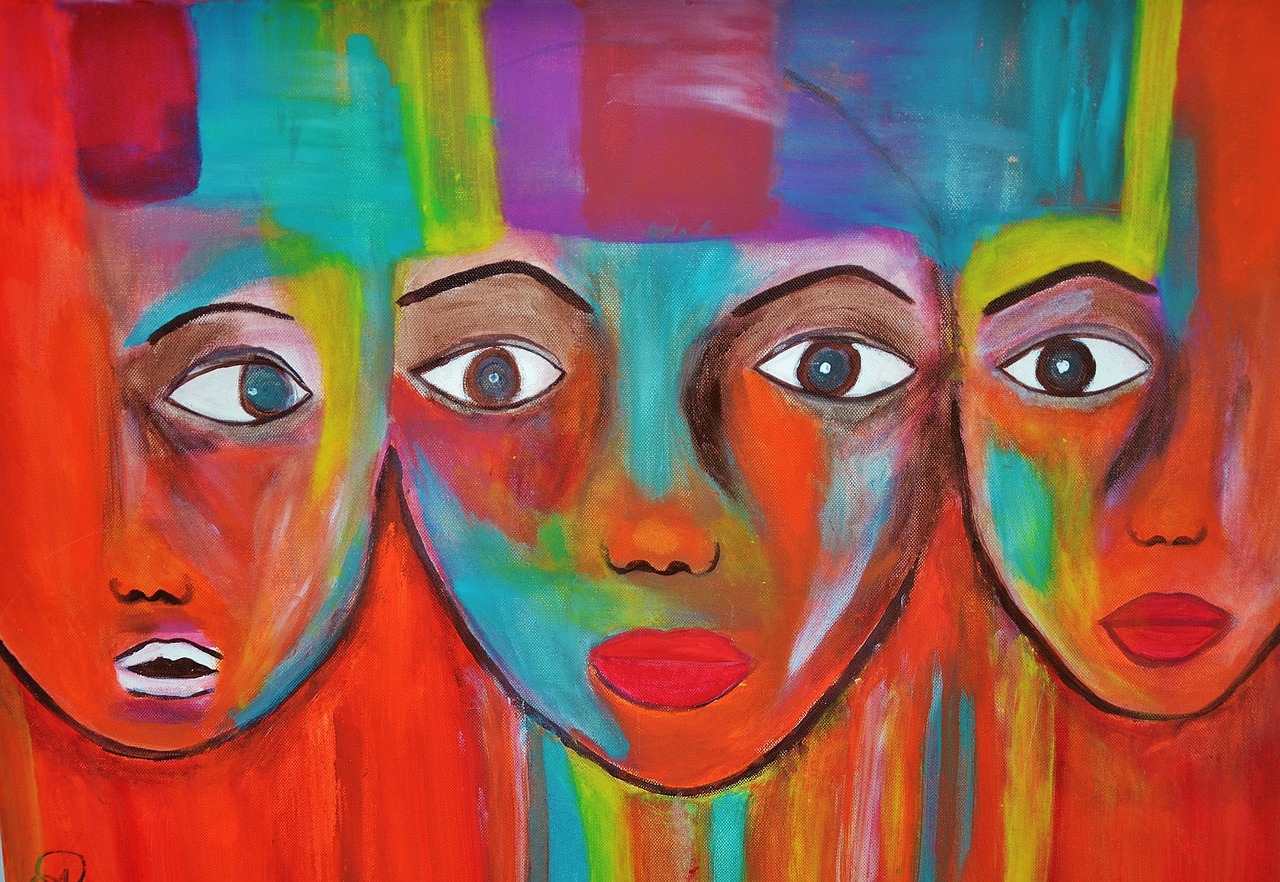
Chiaroscuro Techniques
Chiaroscuro techniques, derived from the Italian words "chiaro" meaning light and "scuro" meaning dark, are a powerful tool in the world of landscape painting. This method emphasizes the dramatic contrast between light and shadow, creating a sense of depth and volume that can transform a flat canvas into a vibrant three-dimensional scene. By skillfully manipulating light and dark, artists can guide the viewer's eye, highlight important elements, and evoke a range of emotions that resonate on a personal level.
One of the most captivating aspects of chiaroscuro is its ability to create atmosphere. Imagine standing in a sun-drenched field at dusk, where the last rays of sunlight filter through the trees, casting long shadows that dance across the ground. This play of light and dark not only defines the shapes of the landscape but also sets the mood, inviting the viewer into a specific moment in time. Artists who master this technique can effectively capture such fleeting experiences, allowing the audience to feel as if they are part of the scene.
To achieve the best results with chiaroscuro, artists often employ a variety of techniques:
- Layering: Applying multiple layers of paint helps create depth, allowing the lighter tones to sit on top of darker shades, enhancing the contrast.
- Glazing: This technique involves applying thin, transparent layers of paint over dry layers. It allows for subtle shifts in color and tone, which can mimic the effects of natural light.
- Scumbling: A technique where a lighter, opaque color is brushed over a dry, darker layer. This adds texture and complexity, enriching the visual experience.
These techniques not only enhance the visual impact of a landscape painting but also contribute to the narrative. For instance, a painting might depict a stormy sky with dramatic contrasts, suggesting an impending change in the atmosphere. The interplay of light and shadow can evoke feelings of tension or tranquility, depending on how the artist chooses to manipulate these elements.
Moreover, chiaroscuro is not just a relic of the past; it continues to influence contemporary artists. By blending traditional methods with modern materials and technologies, they can explore new themes and ideas. The result is a dynamic interplay of light and shadow that captivates audiences and invites them to experience the landscape in a fresh way. Whether through oil paints, acrylics, or even digital mediums, the essence of chiaroscuro remains a vital part of landscape painting, proving that the dance of light and dark is as relevant today as it was in the Renaissance.
What is chiaroscuro?
Chiaroscuro is an artistic technique that uses strong contrasts between light and dark to create a sense of volume and depth in a painting.
How do artists use chiaroscuro in landscape painting?
Artists use chiaroscuro to enhance the three-dimensionality of their landscapes, guiding the viewer's eye to focal points and evoking emotional responses through the interplay of light and shadow.
Can modern artists still use chiaroscuro techniques?
Absolutely! Many contemporary artists incorporate chiaroscuro techniques into their work, merging traditional methods with modern tools to explore new themes and visual narratives.
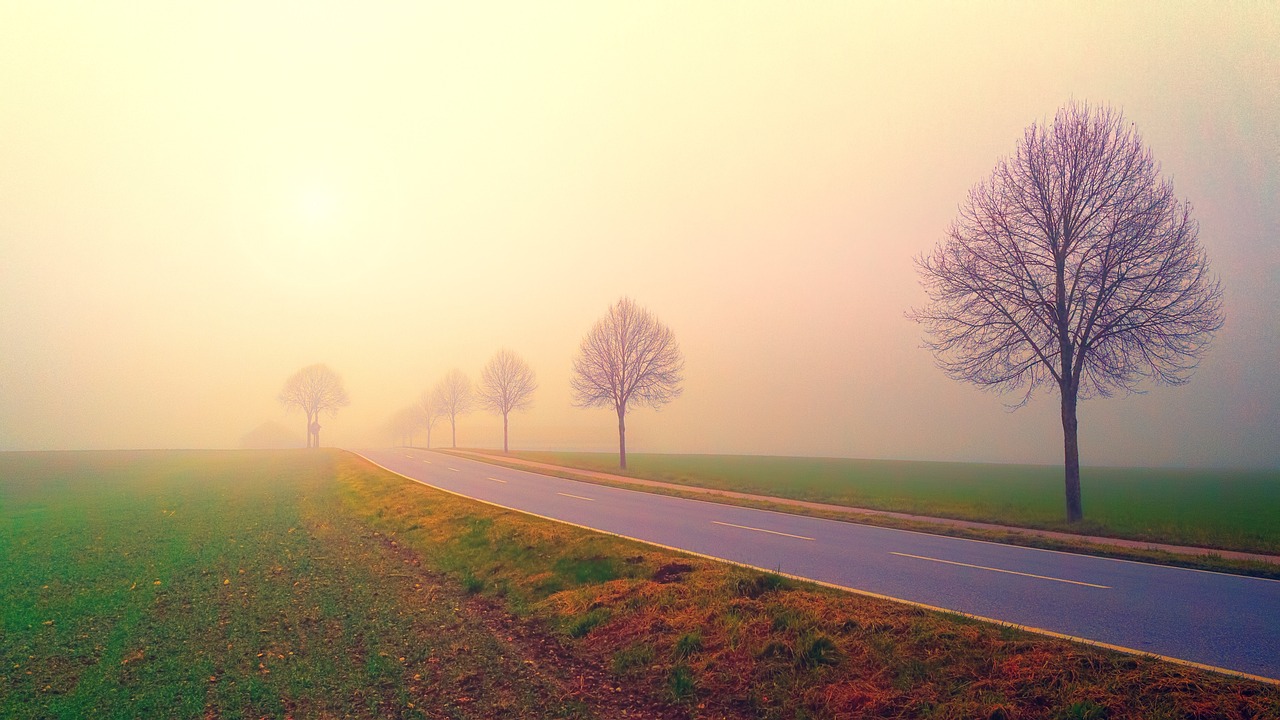
Famous Chiaroscuro Artists
When we think of chiaroscuro, two names often rise to the top: Caravaggio and Rembrandt. These artists not only mastered the technique but also transformed it into a powerful narrative tool that still resonates in the art world today. Caravaggio, known for his dramatic use of light and shadow, created compositions that seemed to leap off the canvas. His works, such as The Calling of Saint Matthew, exemplify how chiaroscuro can evoke a sense of immediacy and emotional intensity. The stark contrasts draw the viewer's eye to the focal points, creating a visceral experience that is hard to forget.
On the other hand, Rembrandt took a slightly different approach. While he also utilized strong contrasts between light and dark, his technique was more subtle, often employing a softer transition between the two. His masterful use of light not only highlighted the subjects but also added a sense of depth and atmosphere to his landscapes and portraits. Works like The Night Watch showcase his ability to create a narrative through light, guiding the viewer's gaze across the canvas in a way that feels both natural and engaging.
These artists didn’t just paint; they told stories through their manipulation of light. By creating a sense of drama and focus, they invited viewers to explore the emotional depths of their subjects. The influence of Caravaggio and Rembrandt extends beyond their own works; they set the stage for future generations of artists to experiment with light in their own unique ways. Today, their legacy lives on as modern artists continue to explore chiaroscuro, blending traditional techniques with contemporary themes.
In addition to Caravaggio and Rembrandt, several other artists have made significant contributions to the chiaroscuro technique. Artists like Giorgione and Leonardo da Vinci also played crucial roles in developing this style, employing light to enhance the emotional and physical realism of their landscapes. Their works remind us that chiaroscuro is not just a technique; it is a language through which artists communicate with their audience, conveying emotions that words often cannot express.
As we delve deeper into the world of chiaroscuro, it becomes clear that this technique is not merely about light and dark; it’s about the stories they tell. Each brushstroke is a part of a larger conversation, a dialogue between the artist and the viewer that transcends time. So, the next time you admire a painting that showcases this powerful technique, take a moment to consider the artist's intention and the emotions they sought to evoke through the interplay of light and shadow.
- What is chiaroscuro? Chiaroscuro is an artistic technique that uses strong contrasts between light and dark to give the illusion of volume in modeling three-dimensional objects and figures.
- Who are the most famous chiaroscuro artists? The most renowned chiaroscuro artists include Caravaggio and Rembrandt, known for their dramatic use of light and shadow.
- How has chiaroscuro influenced modern art? Chiaroscuro techniques continue to influence modern artists, who blend traditional methods with contemporary themes to create dynamic visual narratives.
- Can you find chiaroscuro in landscape painting? Yes, chiaroscuro is often used in landscape painting to create depth and highlight focal points, enhancing the overall emotional impact of the scene.
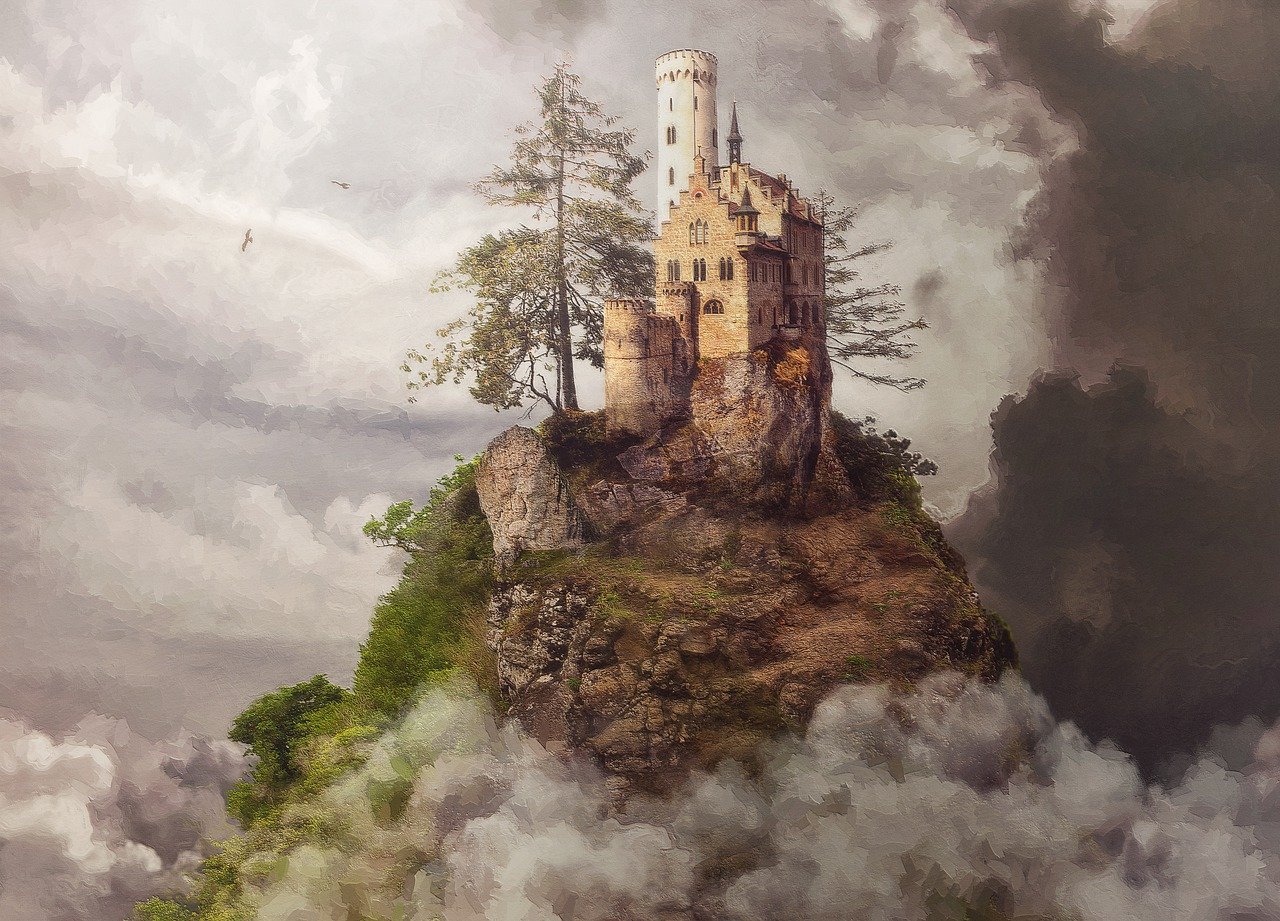
Modern Applications of Chiaroscuro
In today's vibrant world of art, the age-old technique of chiaroscuro continues to find its place, evolving and adapting to contemporary themes and styles. Modern artists are not just replicating the techniques of the masters; they are reinterpreting them, breathing new life into the dramatic contrasts of light and shadow. This resurgence can be seen across various mediums, from traditional oil paintings to digital art forms.
One of the most exciting aspects of modern chiaroscuro is its ability to convey complex emotions and narratives. Artists are now using this technique to explore themes such as isolation, hope, and transformation. By manipulating light, they can guide the viewer's eye to specific areas of the canvas, creating a focal point that resonates with the overall message of the piece. For example, an artist might illuminate a solitary figure against a dark background, emphasizing their emotional state and drawing the audience into a deeper connection with the subject.
Furthermore, the integration of new technologies has opened up a plethora of possibilities for artists. Digital platforms allow for experimentation with light in ways that traditional methods cannot match. Artists can utilize software to simulate the effects of light and shadow, adjusting parameters until they achieve the desired emotional impact. This not only enhances the visual appeal but also allows for a level of precision that can be difficult to attain with physical mediums.
In addition to digital applications, mixed media approaches are also gaining traction. Artists are combining traditional painting techniques with unconventional materials, such as collage, photography, and even sculptural elements. This fusion creates a multi-dimensional effect, where light interacts with different textures and surfaces, producing a dynamic visual experience. For instance, a painter might incorporate reflective materials that catch and play with light, adding an extra layer of depth to the composition.
Ultimately, the modern applications of chiaroscuro are a testament to the technique's enduring relevance. Artists today are not afraid to push boundaries, exploring new themes and technologies while paying homage to the masters who came before them. As we continue to witness the evolution of landscape painting, it becomes clear that chiaroscuro will remain a vital tool for conveying emotion and depth in art.
- What is chiaroscuro? Chiaroscuro is an artistic technique that uses strong contrasts between light and dark to create a sense of volume and depth in painting.
- How do modern artists use chiaroscuro? Modern artists reinterpret chiaroscuro by employing it in various styles and mediums, including digital art and mixed media, to explore contemporary themes and emotions.
- Can chiaroscuro be used in digital art? Absolutely! Digital artists utilize software to manipulate light and shadow, allowing for precise control over the visual effects they wish to achieve.
- What emotions can chiaroscuro evoke in landscape painting? Chiaroscuro can evoke a range of emotions, from drama and tension to tranquility and introspection, depending on how light is used to highlight or obscure elements within the composition.
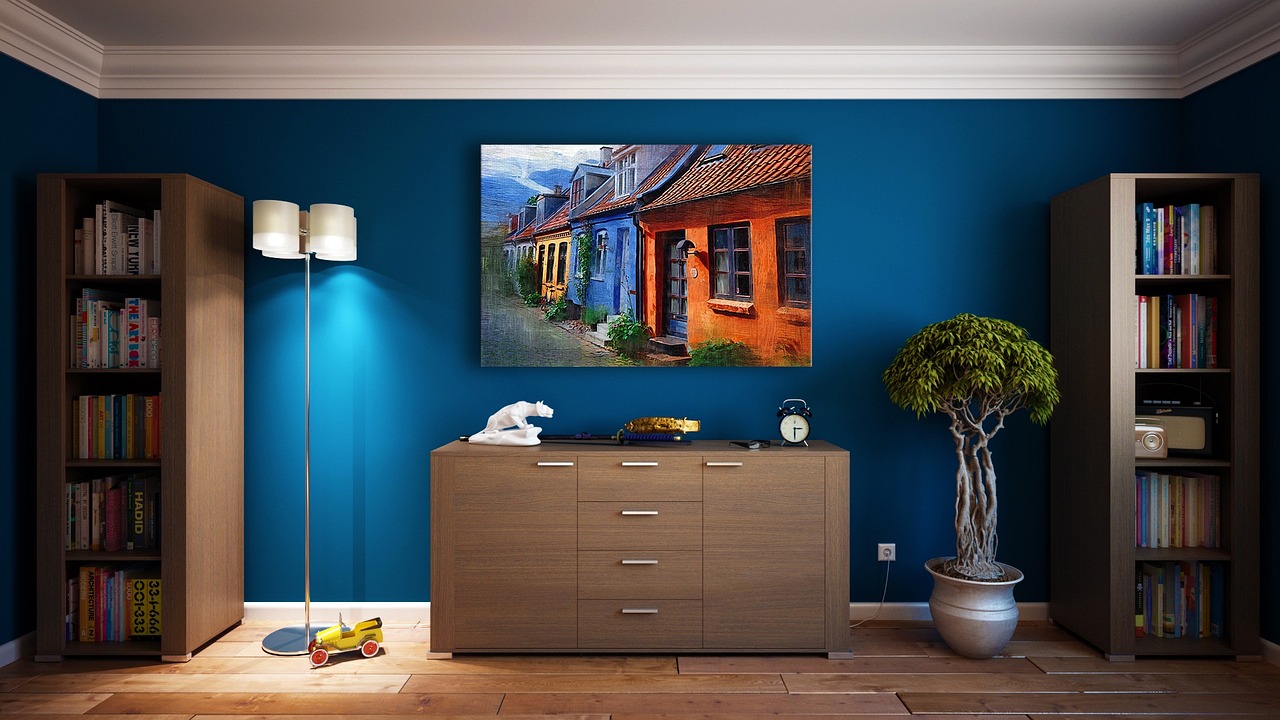
Impressionism and Natural Light
Impressionism marked a pivotal shift in the world of art, particularly in the way artists approached the concept of natural light. Rather than focusing on meticulous detail and precise forms, Impressionist painters embraced the idea of capturing the fleeting effects of light as it danced across landscapes. This movement, which blossomed in the late 19th century, emphasized the importance of perception and momentary impressions, leading to a vibrant and dynamic representation of the world around them.
One of the key characteristics of Impressionism is the artists' ability to convey the transitory nature of light. They often painted en plein air, or outdoors, allowing them to observe and replicate the ever-changing qualities of light in real-time. This approach led to a more spontaneous and expressive style, where brushstrokes became looser and colors more vivid. Artists like Claude Monet and Pierre-Auguste Renoir became masters of this technique, capturing the essence of light through their innovative use of color and form.
Monet, for instance, famously painted the same scene multiple times under different lighting conditions, demonstrating how light could transform a landscape. His series of paintings depicting the Rouen Cathedral showcases this exploration beautifully, as he captured the building at various times of day and in different weather conditions. The resulting works are a testament to the profound impact of light on color perception, mood, and atmosphere.
Impressionists also played with the concept of color theory to enhance their depiction of light. They understood that light is not just white; it carries color, and this color can change based on the time of day, the weather, and the surrounding environment. For example, the warm hues of a sunset can evoke feelings of tranquility and warmth, while the cool tones of a cloudy day might create a more subdued and introspective mood. This understanding allowed them to manipulate color in their landscapes, creating compositions that were not only visually stunning but also emotionally resonant.
To further illustrate the relationship between light and color in Impressionism, consider the following table that outlines how different times of day influence the palette choices of Impressionist artists:
| Time of Day | Color Palette | Emotional Effect |
|---|---|---|
| Morning | Soft pastels, light blues, and yellows | Freshness, optimism |
| Noon | Bright whites, vibrant greens, and yellows | Energy, vitality |
| Evening | Warm oranges, reds, and purples | Calmness, reflection |
| Night | Deep blues, blacks, and silvers | Mystery, serenity |
In essence, Impressionism revolutionized landscape painting by placing a significant emphasis on the effects of natural light. This focus not only changed the way artists approached their work but also altered the viewer's experience, inviting them to engage with art in a more personal and emotional way. The legacy of Impressionism continues to influence contemporary artists, reminding us that light is not merely a physical phenomenon but a powerful tool for storytelling in visual art.
- What is Impressionism? Impressionism is an art movement that originated in the late 19th century, characterized by its focus on capturing the effects of light and atmosphere in landscapes.
- Who were the main artists of the Impressionist movement? Key figures include Claude Monet, Pierre-Auguste Renoir, Edgar Degas, and Camille Pissarro.
- How did Impressionists capture light in their paintings? They painted outdoors and used loose brushstrokes and vibrant colors to depict the changing qualities of light.
- What is the significance of color theory in Impressionism? Impressionists used color theory to understand how light affects color perception, allowing them to create emotionally resonant landscapes.
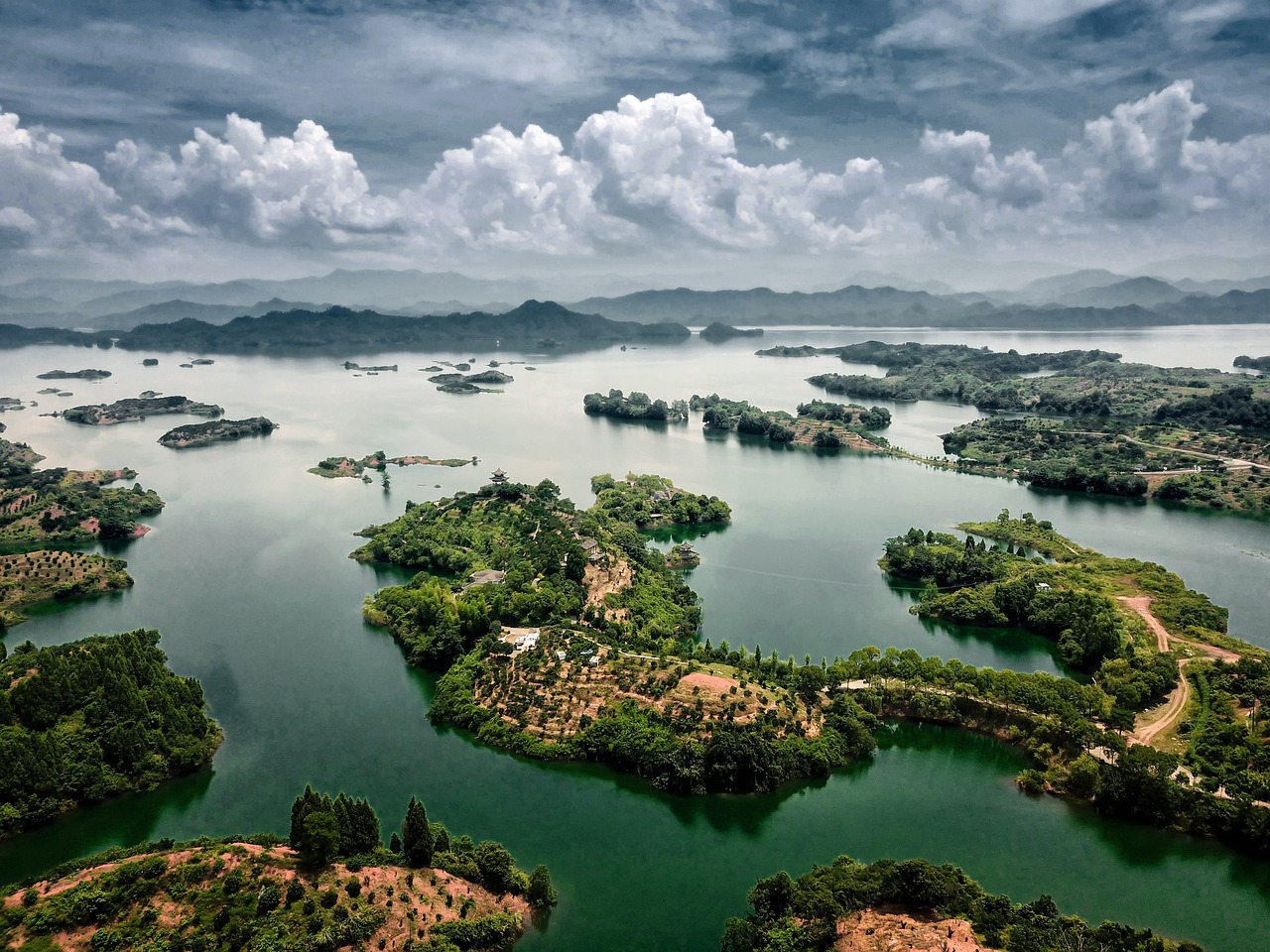
Color Theory and Light
Understanding color theory is essential for landscape painters, as it serves as the foundation for creating visually compelling and emotionally resonant artwork. The interplay between light and color can dramatically alter the mood and perception of a landscape, making it a vital consideration in composition. Imagine standing in a sunlit meadow; the golden rays transform the ordinary greens and browns of the earth into vibrant hues that dance before your eyes. This transformation is not just a visual experience—it's a sensory journey that artists strive to replicate on canvas.
When artists think about color in relation to light, they often consider the warm and cool color spectrum. Warm colors, such as reds, oranges, and yellows, tend to advance in a composition, creating a sense of intimacy and closeness. In contrast, cool colors like blues, greens, and purples recede, adding a sense of depth and distance. For instance, a sunset painting might use warm colors to capture the fiery sky, while cooler colors in the background suggest a tranquil horizon. This strategic use of color not only enhances the visual appeal but also manipulates viewer emotions, guiding them through the landscape as if on a journey.
Furthermore, the concept of color mixing is crucial for achieving realistic light effects. Techniques such as glazing and layering allow painters to replicate the subtleties of natural light in their landscapes. Glazing involves applying thin, transparent layers of color over dried paint, which can create luminous effects that mimic the way light interacts with surfaces in the real world. Layering, on the other hand, builds up color gradually, allowing for a more complex and rich palette. By mastering these techniques, artists can breathe life into their landscapes, making the viewer feel as if they could step right into the scene.
In addition to traditional methods, modern artists are also exploring digital tools to enhance their understanding of color theory and light. Digital painting software allows for experimentation with color palettes and light effects that can be adjusted easily, enabling artists to visualize how different combinations can affect the overall composition. This flexibility encourages creativity and innovation, pushing the boundaries of traditional landscape painting.
In summary, color theory and light are intertwined elements that play a crucial role in landscape painting. By understanding how to manipulate these elements, artists can create stunning visual narratives that resonate with viewers on multiple levels. Whether through the warm embrace of a sun-soaked field or the cool serenity of a twilight sky, the effects of light and color are what truly bring a landscape to life.
- What is color theory? Color theory is a set of principles used to understand how colors interact and the effects they have on one another, particularly in art and design.
- How does light affect color perception? Light influences how colors are seen; different lighting conditions can change the appearance of colors, making them appear warmer or cooler.
- What techniques can artists use to mix colors effectively? Artists often use glazing and layering techniques to achieve depth and vibrancy in their paintings, allowing for a more realistic representation of light.
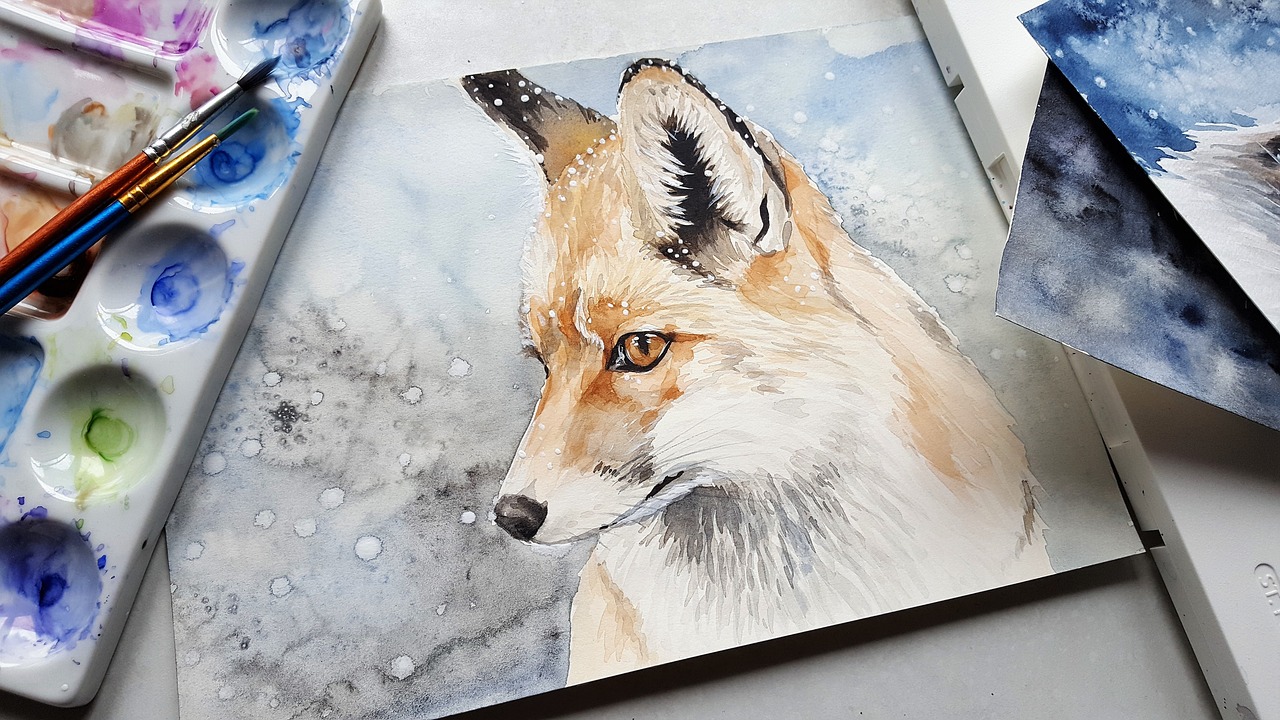
Warm vs. Cool Colors
When it comes to landscape painting, understanding the difference between warm and cool colors is essential for creating the desired emotional impact. Warm colors, such as reds, oranges, and yellows, tend to evoke feelings of warmth and intimacy. They are often associated with sunlight and energetic moments, making them ideal for capturing the vibrancy of a sunrise or the glow of a sunset. On the other hand, cool colors like blues, greens, and purples create a sense of calmness and distance. They can evoke feelings of tranquility, often used to depict serene bodies of water or expansive skies.
The strategic use of these color families can dramatically alter the viewer's perception of a landscape. For instance, a landscape dominated by warm colors can feel inviting and energetic, almost as if the viewer is being drawn into the scene. In contrast, a landscape that leans towards cool colors may feel more distant and contemplative, inviting the viewer to reflect on the scene rather than immerse themselves in it.
Artists often play with the balance of warm and cool colors to manipulate emotions effectively. For example, placing a warm-colored object in a predominantly cool landscape can create a focal point that draws the eye and evokes emotional responses. This technique can be likened to a warm hug amidst a chilly breeze, creating a striking contrast that resonates deeply with the viewer.
Moreover, the interplay between warm and cool colors can also affect the perception of space and depth in a painting. Warm colors tend to advance towards the viewer, making them appear closer, while cool colors recede, creating an illusion of depth. This principle is crucial for artists aiming to create a three-dimensional feel in their landscapes. By understanding how these colors interact, artists can guide the viewer's eye and enhance the overall composition.
To illustrate this concept further, consider the following table that summarizes the characteristics of warm and cool colors:
| Color Type | Examples | Emotional Impact | Spatial Effect |
|---|---|---|---|
| Warm Colors | Reds, Oranges, Yellows | Intimacy, Energy, Warmth | Advancing |
| Cool Colors | Blues, Greens, Purples | Calmness, Distance, Serenity | Receding |
In conclusion, the choice between warm and cool colors is not merely a matter of aesthetics; it is a powerful tool that landscape painters can wield to evoke specific emotions and create depth in their works. By mastering the use of these color families, artists can transform their landscapes into evocative narratives that resonate with viewers on a profound level.
- What are warm colors? Warm colors include reds, oranges, and yellows, which evoke feelings of warmth and energy.
- What are cool colors? Cool colors consist of blues, greens, and purples, creating a sense of calmness and tranquility.
- How do warm and cool colors affect perception in landscape painting? Warm colors tend to advance and create intimacy, while cool colors recede, adding depth to the composition.
- Can I mix warm and cool colors in my painting? Absolutely! Mixing both can create contrast and enhance the emotional impact of your landscape.

Color Mixing Techniques
When it comes to landscape painting, mastering can truly elevate an artist's work. The way colors interact with light can create stunning visual effects that bring a landscape to life. One of the most effective methods for achieving realistic light effects is through the use of glazing and layering. These techniques allow artists to build depth and complexity in their color palettes, ultimately enhancing the overall atmosphere of their artwork.
Glazing involves applying a thin, transparent layer of paint over a dried layer of opaque paint. This technique not only alters the color beneath but also adds luminosity, simulating the way light interacts with different surfaces in nature. For instance, when painting a sunset, an artist might first lay down a base of warm oranges and yellows, then glaze over it with a transparent red to create a rich, glowing effect that mimics the warmth of the setting sun.
On the other hand, layering is a technique where multiple layers of paint are applied to create depth and texture. By using this method, artists can achieve a more dynamic range of colors and tones. For example, in depicting a forest, an artist may start with a dark green base layer, then gradually add lighter greens and yellows on top, creating a sense of light filtering through the leaves. This not only enhances the realism of the scene but also allows for a more immersive experience for the viewer.
To effectively mix colors, understanding the color wheel is essential. Artists often refer to it to find complementary colors, which can make a landscape pop. For instance, pairing a vibrant blue sky with warm orange hues in the foreground can create a striking contrast that draws the viewer's eye. Here’s a simple table to illustrate some common color combinations:
| Color Pair | Effect |
|---|---|
| Blue & Orange | Strong contrast, vibrant energy |
| Red & Green | Dynamic balance, natural harmony |
| Yellow & Purple | Warmth and coolness, eye-catching |
Additionally, artists often explore the concept of temperature in color mixing. Warm colors, such as reds and yellows, tend to advance and create a sense of intimacy, while cool colors, like blues and greens, can recede, adding depth and distance. This understanding allows artists to manipulate emotions and perceptions effectively within their landscapes. Imagine a serene lake scene: using cool blues and greens can evoke a sense of calm, while warm hues can bring energy and vibrancy to a sunset over the water.
Ultimately, the mastery of color mixing techniques is a journey that every landscape painter undertakes. It requires patience, experimentation, and a willingness to understand how light and color interact. By embracing these techniques, artists can create breathtaking landscapes that resonate with viewers, inviting them to step into the scene and experience the beauty of nature through the artist's eyes.
- What is the difference between glazing and layering? Glazing involves applying a transparent layer of paint over dried paint, while layering refers to stacking multiple layers of paint to create depth.
- How can I create depth in my landscape paintings? Using warm and cool colors strategically, along with techniques like glazing and layering, can help create a sense of depth.
- What role does the color wheel play in painting? The color wheel helps artists understand color relationships and choose complementary colors to enhance their compositions.
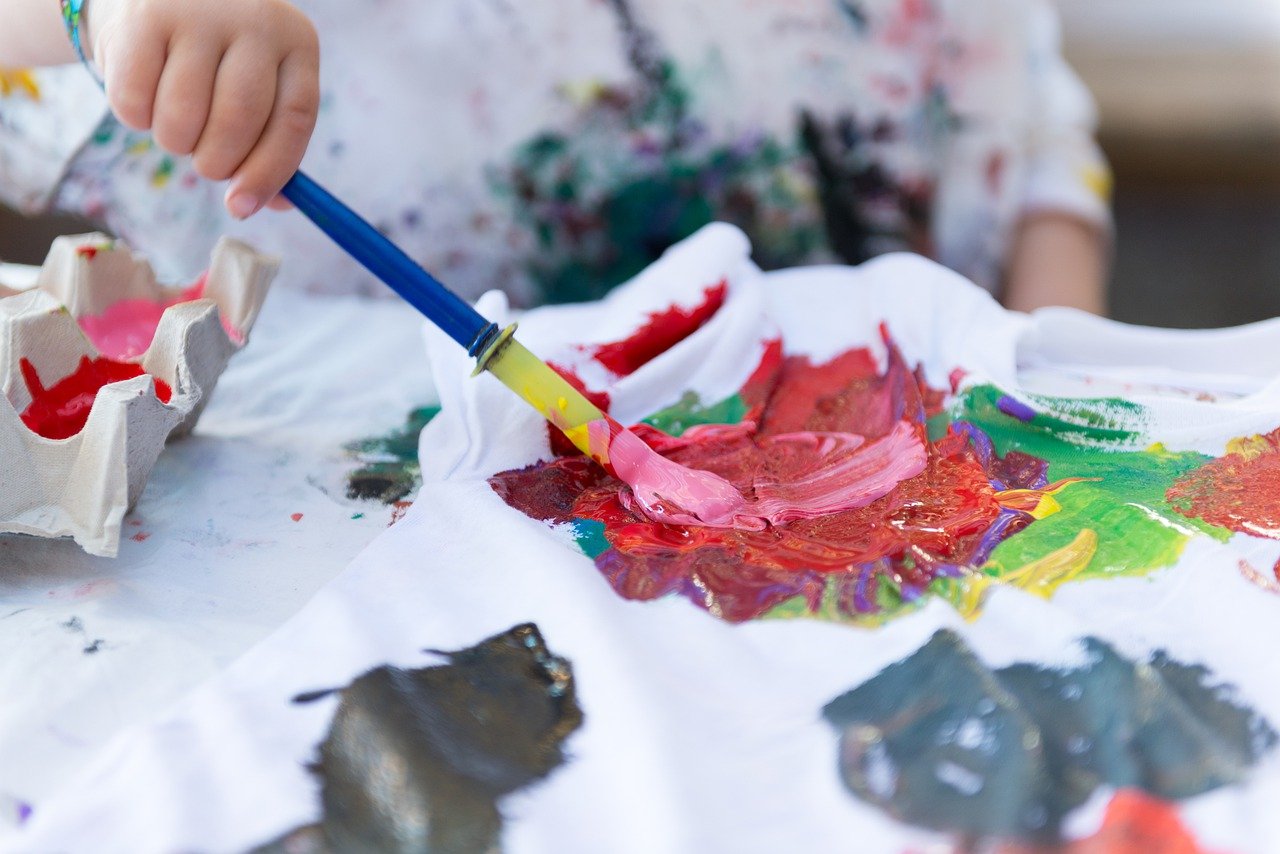
Contemporary Techniques for Capturing Light
In the ever-evolving world of art, contemporary techniques for capturing light in landscape painting have taken on a life of their own. Artists today are not only inspired by the masters of the past but are also experimenting with innovative tools and mediums that allow them to portray light in ways that were once unimaginable. With the advent of technology, the possibilities for representing light have expanded, enabling artists to create breathtaking landscapes that resonate with viewers on multiple levels.
One of the most exciting developments in recent years is the rise of digital painting. This technique allows artists to manipulate light effects with remarkable precision. Using software like Adobe Photoshop or Corel Painter, artists can layer images, adjust transparency, and apply filters that mimic natural light. Imagine being able to simulate the soft glow of a sunset or the stark contrast of midday sun with just a few clicks! Digital tools provide a playground for creativity, where artists can explore the interplay of light and shadow without the constraints of traditional media.
Moreover, digital painting opens up a world of experimentation. Artists can easily undo mistakes, try out different color palettes, and even create animated light effects that bring their landscapes to life. This fluidity in the creative process allows for a deeper exploration of how light interacts with the environment, resulting in dynamic and captivating pieces that push the boundaries of traditional landscape painting.
In addition to digital methods, many contemporary artists are embracing mixed media approaches. By combining traditional painting techniques with other materials—such as collage, textiles, or even found objects—artists can achieve unique light effects that add texture and depth to their work. For instance, incorporating reflective materials can create a play of light that changes with the viewer's perspective, making the artwork an interactive experience. This method not only enhances the visual appeal but also invites the audience to engage with the piece on a more personal level.
To illustrate the diversity of contemporary techniques, here’s a quick look at some popular methods artists are using today to capture light:
- Layering: Building up layers of paint or digital elements to create depth and complexity in light representation.
- Glazing: Applying thin layers of transparent paint to achieve luminosity and richness in color.
- Texture Creation: Using various materials to add physical texture that interacts with light in intriguing ways.
Furthermore, artists are increasingly exploring the emotional resonance of light in their landscapes. The way light is portrayed can evoke a range of feelings, from serene tranquility to vibrant energy. By understanding the psychological effects of light and color, contemporary artists are able to craft landscapes that not only depict a scene but also convey a mood or story. This deeper connection between the viewer and the artwork is what sets contemporary landscape painting apart from its historical counterparts.
As we look to the future, it’s clear that the exploration of light in landscape painting will continue to evolve. With new technologies and materials emerging, artists will undoubtedly find even more innovative ways to express the beauty and complexity of light. Whether through digital means or mixed media, the modern landscape painter is equipped with a toolkit that allows for endless creativity and expression. The challenge remains: how will future artists interpret light, and what new narratives will emerge from their canvases?
Q: What are the main differences between traditional and contemporary techniques for capturing light?
A: Traditional techniques often rely on physical mediums like oil or watercolor, focusing on methods such as glazing and chiaroscuro. In contrast, contemporary techniques may include digital painting and mixed media, allowing for more experimentation and flexibility in capturing light effects.
Q: How does digital painting enhance the representation of light?
A: Digital painting allows artists to manipulate light with precision, using layers, filters, and various tools to simulate natural light effects. This flexibility enables the creation of dynamic and visually stunning landscapes.
Q: Can mixed media techniques really improve the depiction of light in landscapes?
A: Absolutely! Mixed media techniques can add texture and depth, allowing light to interact with different materials in unique ways, creating a more immersive experience for the viewer.
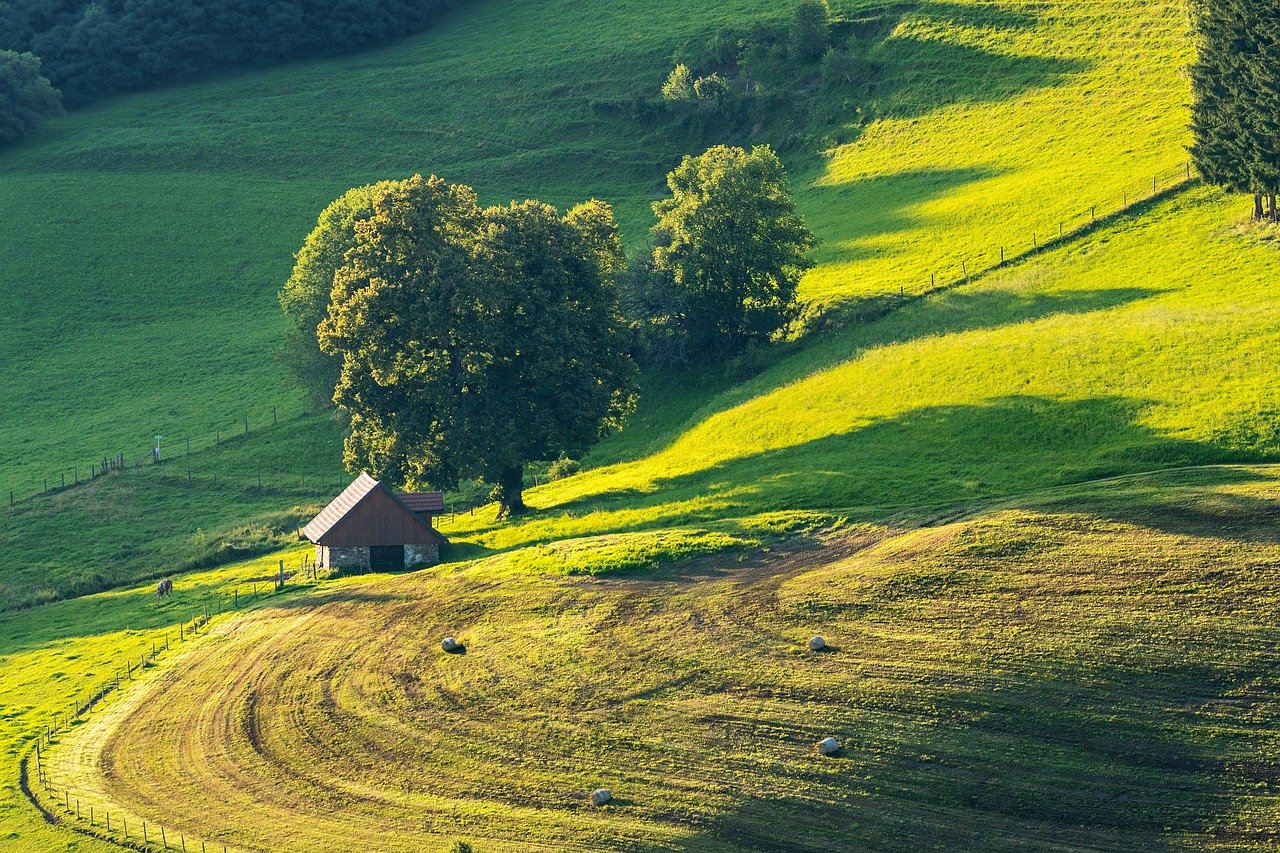
Digital Painting and Light Effects
In the realm of modern art, digital painting has emerged as a revolutionary medium that allows artists to manipulate light in ways that traditional methods simply cannot match. With the aid of software like Adobe Photoshop, Corel Painter, and Procreate, artists can experiment with layers, brushes, and various tools to create stunning light effects that bring their landscapes to life. Imagine being able to adjust the intensity of sunlight streaming through a forest canopy or the soft glow of twilight over a serene lake—all with just a few clicks!
One of the most exciting aspects of digital painting is the ability to use layering techniques. Layers allow artists to separate different elements of their composition, making it easier to adjust the lighting effects without impacting the entire piece. For instance, an artist might create a base layer for the landscape and then add multiple layers for the sky, clouds, and light reflections. This flexibility enables the exploration of how light interacts with different surfaces, enhancing the overall depth and realism of the painting.
Furthermore, digital tools offer a plethora of brushes designed specifically to simulate various light effects. For example, soft brushes can be used to create a hazy atmosphere, while sharper brushes can define the edges of light sources, such as the sun or moon. Artists can also utilize filters to apply effects like glow or blur, which can dramatically alter the perception of light in their work. This capability allows for a greater degree of creativity and experimentation than ever before.
Moreover, digital painting facilitates the exploration of color temperature and its relationship with light. Artists can easily adjust the hues of their landscapes to reflect different times of day or weather conditions. For instance, a sunrise might be painted with warm oranges and yellows, while a sunset could feature cooler purples and blues. This dynamic manipulation of color not only enhances the visual appeal but also evokes specific emotions and atmospheres within the viewer.
To illustrate the impact of digital techniques on light effects, let’s take a look at a comparison table of traditional vs. digital methods:
| Aspect | Traditional Painting | Digital Painting |
|---|---|---|
| Flexibility | Limited; requires physical changes | Highly flexible; easy to adjust layers |
| Light Effects | Dependent on physical mediums | Multiple brushes and filters available |
| Color Adjustment | Requires mixing and reapplication | Instant adjustments with color sliders |
| Experimentation | Messy and time-consuming | Quick and non-destructive |
Ultimately, the realm of digital painting opens up a world of possibilities for capturing light effects in landscape art. Artists can now create breathtaking images that resonate emotionally with viewers, all while pushing the boundaries of traditional techniques. As technology continues to evolve, we can only anticipate even more innovative methods for representing light and atmosphere in landscapes, making the future of digital painting an exciting frontier for artistic expression.
- What software is best for digital painting? Popular choices include Adobe Photoshop, Corel Painter, and Procreate, each offering unique tools for artists.
- Do I need a graphics tablet for digital painting? While not necessary, a graphics tablet can greatly enhance the experience and precision of digital artwork.
- Can I replicate traditional painting techniques digitally? Yes! Many digital tools are designed to mimic traditional brushes and techniques, allowing for a seamless transition.
- Is digital painting considered "real" art? Absolutely! Digital painting is a legitimate form of artistic expression that is widely recognized and celebrated.
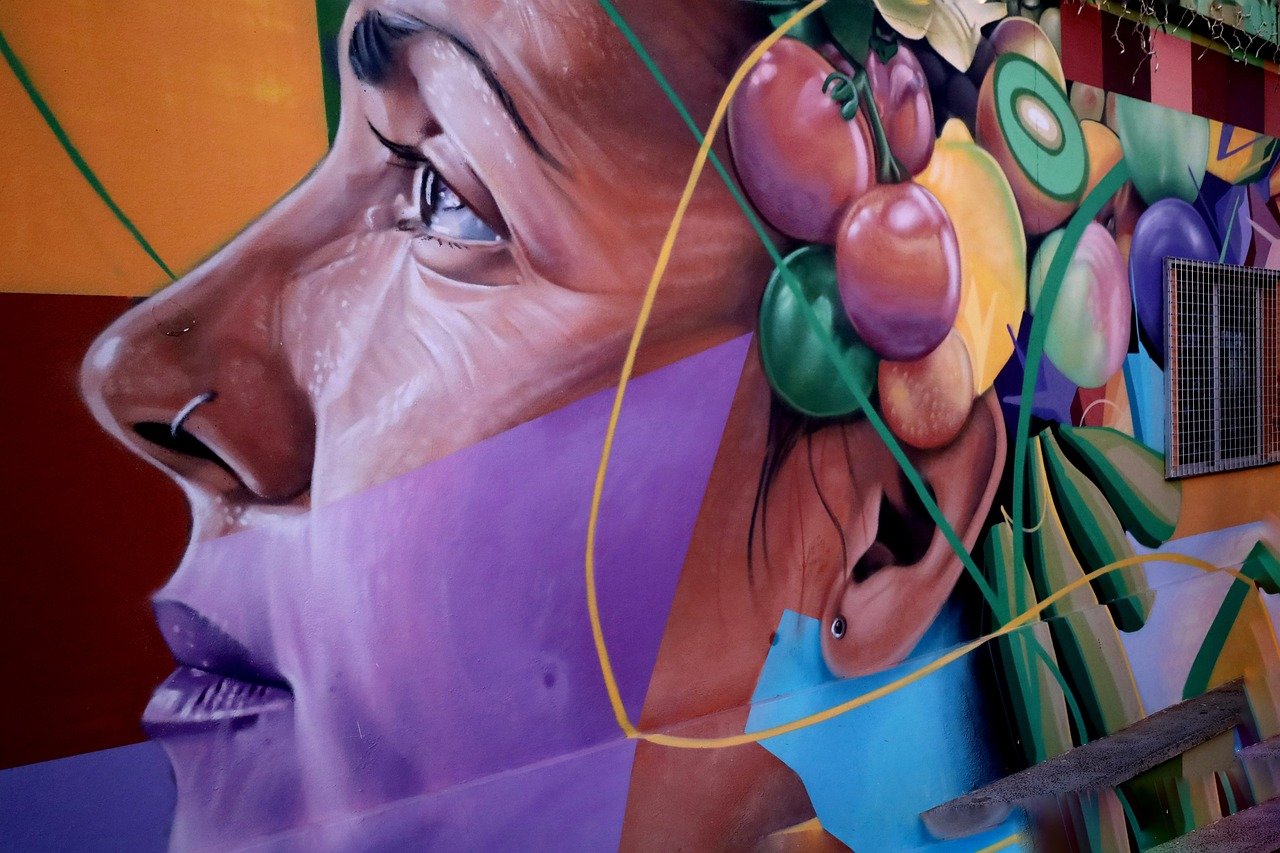
Mixed Media Approaches
In the realm of landscape painting, have emerged as a vibrant way for artists to express their creativity and capture the essence of light in unique ways. By combining traditional painting techniques with various other materials, artists can create stunning landscapes that not only depict the natural world but also evoke emotions and invite viewers into a multi-dimensional experience. Imagine standing in front of a painting that seems to shimmer with light, where every brushstroke tells a story and every texture adds depth to the scene.
One of the most exciting aspects of mixed media is the freedom it offers. Artists can blend mediums such as acrylics, watercolors, pastels, and even found objects to create a rich tapestry of textures and colors. This approach allows for a more dynamic representation of light, as different materials reflect and absorb light in various ways. For instance, incorporating metallic paints can add a glimmering effect that mimics sunlight dancing on water, while rough textures can create shadows that enhance the three-dimensionality of the landscape.
Moreover, mixed media techniques can be used to experiment with layering, a method that adds complexity to the artwork. By applying multiple layers of paint and other materials, artists can build up a sense of depth and atmosphere, making it feel as though the viewer is peering into a real landscape. This layering process can also include collage elements, where photographs or textured papers are integrated into the painting, offering a surprising contrast that challenges traditional perceptions of landscape art.
To illustrate the versatility of mixed media approaches, consider the following table that outlines some common materials and their effects on light in landscape painting:
| Material | Effect on Light |
|---|---|
| Acrylic Paint | Bright, vibrant colors with a glossy finish that reflects light well. |
| Watercolor | Translucent layers that create a soft, diffused light effect. |
| Pastels | Soft, chalky texture that can add a dreamy quality to light. |
| Metallic Paints | Shimmering effects that mimic natural light reflections. |
| Textured Papers | Creates shadows and depth, enhancing the three-dimensional feel. |
Ultimately, the beauty of mixed media approaches lies in their ability to push boundaries and redefine what landscape painting can be. Artists are no longer confined to a single medium; instead, they can explore the interplay of light and texture in exciting new ways. This evolution not only enriches the artistic process but also invites viewers to engage with the artwork on a deeper level. When you look at a mixed media landscape, you’re not just seeing a scene—you’re experiencing a moment, a feeling, and a story brought to life through the innovative use of materials.
- What is mixed media in landscape painting? Mixed media refers to the use of multiple artistic mediums in a single artwork, allowing for a combination of textures, colors, and effects that enhance the representation of light and atmosphere.
- How does light play a role in mixed media landscapes? Light influences how different materials interact, creating various effects that can evoke emotions and enhance the overall composition of the painting.
- Can beginners use mixed media techniques? Absolutely! Mixed media is accessible to artists of all skill levels, allowing for experimentation and personal expression.
Frequently Asked Questions
- What role does light play in landscape painting?
Light is crucial in landscape painting as it shapes the viewer's perception and emotional response. It helps convey depth, atmosphere, and narrative, making the artwork more engaging and dynamic.
- How have historical movements influenced the use of light in art?
Different art movements, such as the chiaroscuro of the Renaissance and the Impressionist focus on natural light, have interpreted light in unique ways. These interpretations have significantly influenced the techniques and styles used in landscape painting throughout history.
- What is chiaroscuro and how is it used in landscape painting?
Chiaroscuro refers to the strong contrasts between light and dark, enhancing the three-dimensionality of a painting. This technique adds drama and directs the viewer's attention to focal points within the landscape.
- Can you name some famous artists known for their use of chiaroscuro?
Yes! Renowned artists like Caravaggio and Rembrandt are famous for mastering chiaroscuro. Their work showcases how effectively light can evoke emotion and create depth in landscape scenes.
- How did Impressionist artists change the perception of light in landscape painting?
Impressionist artists revolutionized landscape painting by focusing on the effects of natural light. They aimed to capture fleeting moments, demonstrating how light influences color and atmosphere in their works.
- What is the significance of color theory in landscape painting?
Color theory is essential for landscape painters as it explains how light and color interact. The interplay can dramatically alter the mood and perception of a landscape, making it a vital consideration in composition.
- What is the difference between warm and cool colors in landscape painting?
Warm colors tend to advance and create a sense of intimacy, while cool colors recede, adding depth. Artists strategically use these effects to manipulate viewer emotions and enhance the overall experience of their landscapes.
- What modern techniques do artists use to capture light in landscapes?
Contemporary artists employ various techniques, including digital painting and mixed media approaches. These methods allow for innovative representations of light and atmosphere, enhancing the depth and texture of landscape paintings.
- How does digital painting enhance the representation of light?
Digital painting offers artists the ability to experiment with layers and filters, creating stunning representations of light and shadow. This flexibility allows for precise control over light effects in landscape artworks.
- What are mixed media techniques in landscape painting?
Mixed media techniques combine traditional painting with other materials, allowing artists to explore unique light effects. This approach enhances texture and depth, providing innovative ways to depict landscapes and their lighting.



















